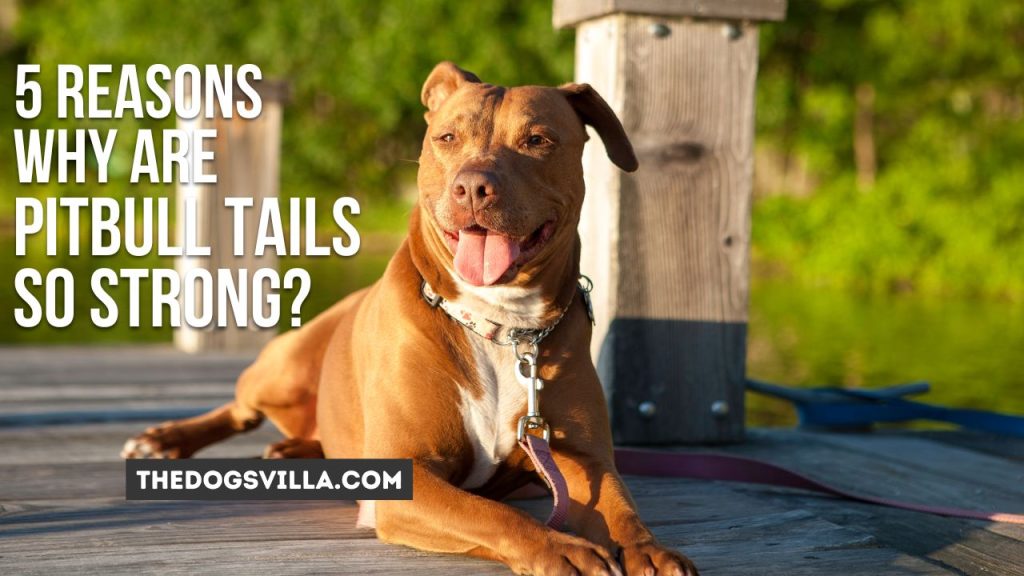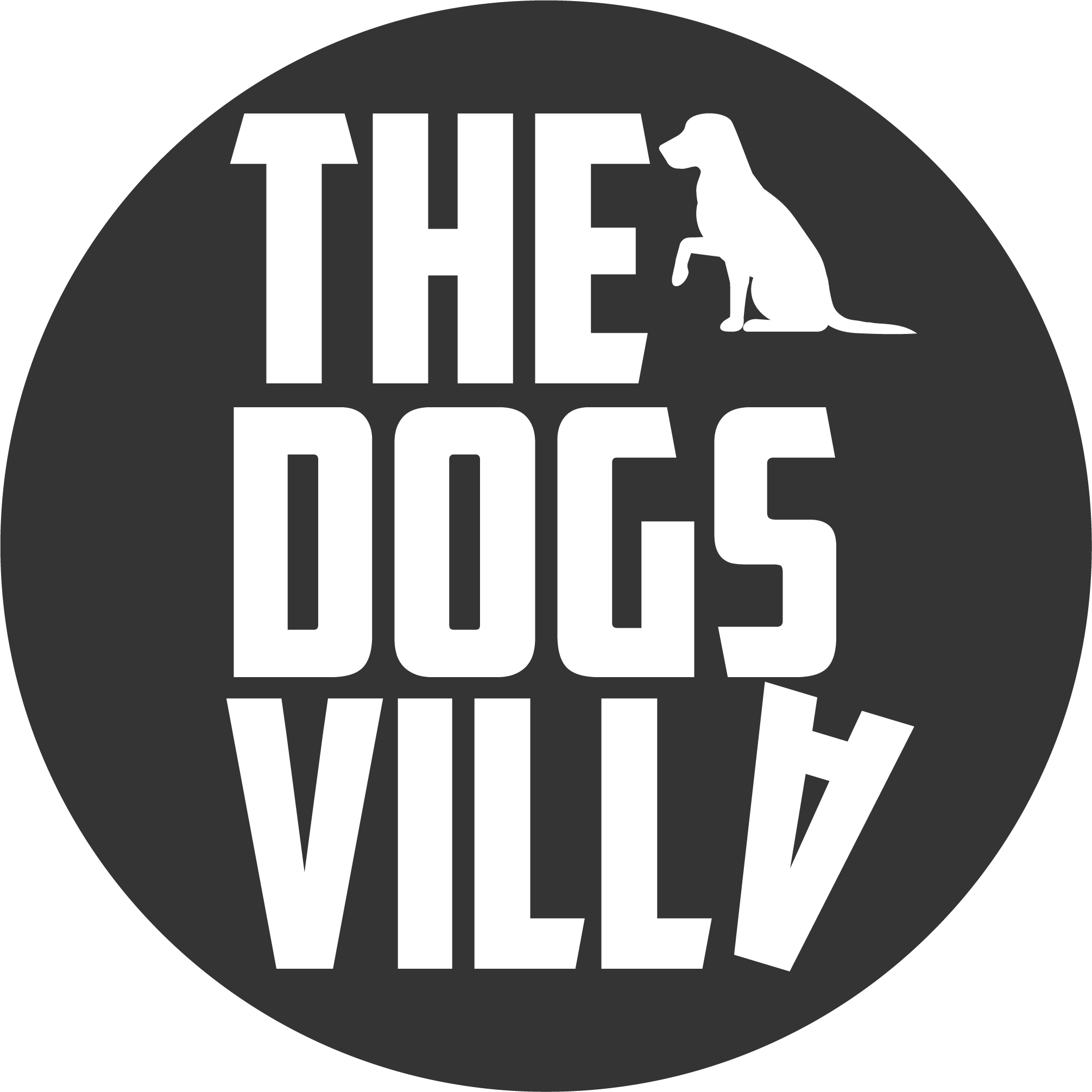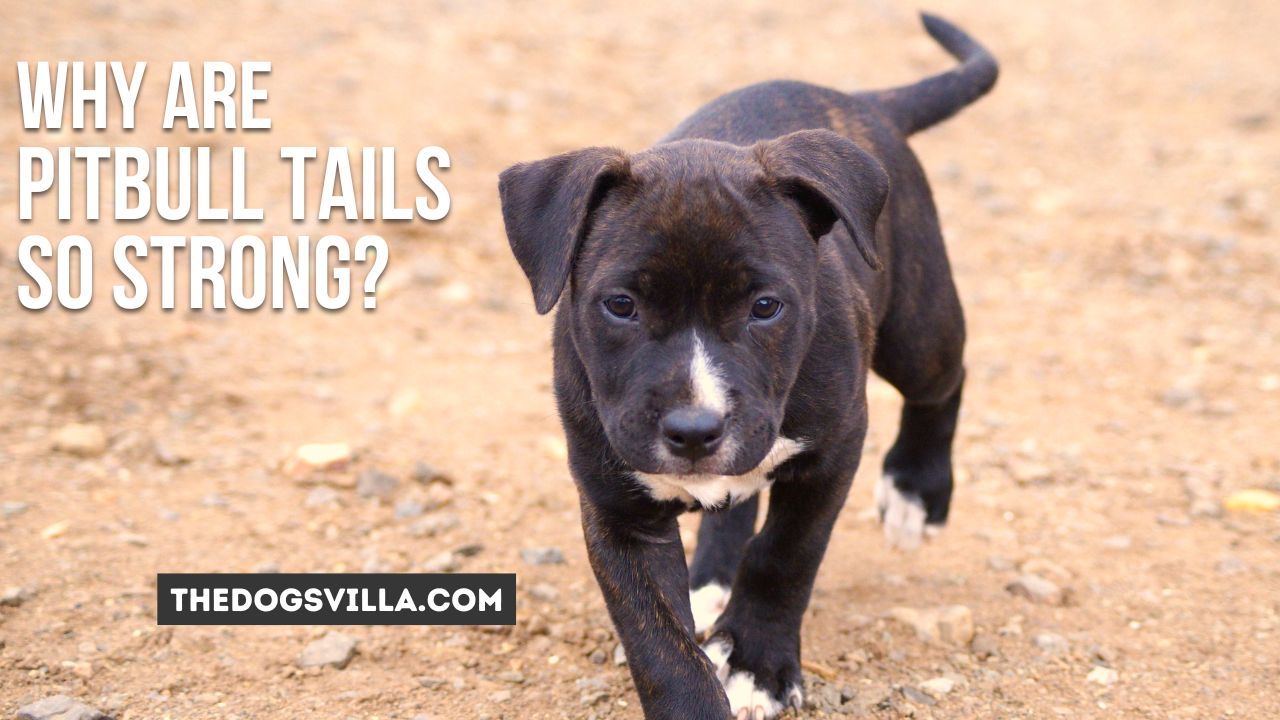Pitbulls are renowned for their muscular physiques, intense jaw strength, and loyalty to their owners. However, another notable yet underappreciated feature is their thick, strong tails. But why exactly are pitbull tails so robust and powerful compared to other dog breeds? One of the most noticeable features of the pitbull is its thick, strong tail. In fact, the pitbull tail tends to be disproportionately muscular compared to the rest of its body and other dog tail types. This pronounced caudal muscle gives the pitbull incredible tail strength for its size.
Contents
Why Are Pitbull Tails So Strong?
A dog’s tail serves several important functions, all of which require strength and flexibility to avoid injury. Pitbull tails are adapted for:
Balance and Agility
Like any dog, pitbulls utilize their tails to balance and stabilize their body when running, jumping, climbing, or suddenly changing directions. Their tails act as a counterweight to shift their center of gravity for optimal movement. This is especially vital for compact yet ripped dogs like pitbulls.
Communication
A dog’s tail position and motion conveys crucial emotional information. Pitbulls specifically tend to hold their tapered tails high and stiff to project confidence and alertness. Gentle tail wags can signify a happy, friendly mood. Tucked tails demonstrate fear or submission. Dynamic tail control supports clear communication.
Protection
The thick pitbull tail safeguards their back end and vulnerable pelvic regions when dealing with thorny brush, aggressive animals, or physical confrontations. Their short fur also provides less rear coverage compared to long-haired breeds.
Force Transfer
Unlike cats, pitbulls cannot redirect their physical power through extreme flexibility. Instead, their explosive muscular energy ripples straight down their spine through their tail. Their sturdy tails prevent bony joint dislocations or fractures from the intense forces generated.
Built for Strength, Power and Endurance
A pitbull’s heavily muscular yet flexible body demands an equally strong and stable tail:
| Bite Force PSI | 235 psi |
| Muscle Mass % | 17-25% of body weight |
Compact Muscularity
Despite their medium size, pitbulls have condensed yet rippling physiques seemingly sculpted from raw muscle and built for strength, stamina, and pressure resilience. Their entire rear, tail included, contains overlapping fast-twitch and slow-twitch muscles layered upon dense bone.
Mental Tenacity
In addition to sheer brawn, pitbulls possess an insatiable determination and “gameness” inherited from their bull-baiting ancestors. This intense mental focus manifests physically as they explosively drive their entire body – tail included – with tireless intensity and follow-through at every task.
Flexibility
Remarkably, all this muscular strength does not impede flexibility and agility. Their supple yet sturdy tails exhibit an impressive range of directed motion integral for normal canine communication and emotional expression.
In summary, the pitbull tail’s external appearance of vigor reflects the functional demands of their strain-resistant anatomy and forceful temperament.
Key Physical Adaptations
Let’s analyze the exceptional anatomical attributes enabling such strong, dynamic pitbull tails:
Thick Base
Unlike the slender tails of sighthounds, a pitbull’s tail is set low on their rump emerging thickly from the rear. This wide origin provides extensive surface area for additional muscles to attach higher up the tail in a densely packed matrix.
Short Length
Compared to a Golden Retriever’s flowing plume averaging 22 vertebrae, a pitbull tail contains only about 8-10 bones. This truncated length condenses their muscular density instead of spreading it over several feet. Their tails pack brutal power in a petite package.
Limited Flexibility
Long active tails can bend and twist freely through extensive flexible vertebral joints. But pitbull tails have restricted vertical range of motion to primarily wag assertively side-to-side instead of tentatively upwards. This limits extreme vertebral mobility in favor of enhancing overall sturdiness and strength.
In summary, their wide-set base, shorter length and controlled flexibility allow their tails to function like a bullwhip – all explosive power transmitted through a rigid fulcrum into each crack guaranteed to get attention.
Musculature
Of course, an exterior look of vigor reflects interior muscular power:
Tendons
Tendons are fibrous tissues attaching muscles to bone that withstand tension. Pitbull tails are loaded with short, thick striated tendons running along the vertebrae secured through tissue fusion instead of movable joints. This connective tissue transmits muscular leverage directly into tail motion.
Fast-Twitch Muscles
In addition to slow-twitch postural muscles, pitbull tails are packed with numerous large fast-twitch fibers specialized for explosive power bursts. These swift type IIb fibers respond immediately when pitbulls need to aggressively whip their tails against resistance from side to side.
Muscle Layering
The tail’s musculature consists of intricate criss-crossing layers of various longitudinal, transverse, vertical and oblique directional muscles comprising a dense, resilient matrix. This woven siding creates a powerful muscular cocoon able to flex, curl and tense the tail with remarkable control.
Skeletal Reinforcements
Of course, external power stems from internal skeletal stability:
Fused Vertebrae
Like all mammal tails, a shortened line of vertebrae forms the central support. But pitbulls have more fused and condensed vertebrae permitting little rotation between segments. This bony stiffness prioritizes brute strength over extreme flexibility.
Overlaying Bones
Supplementary bones like chevron bones overlay the vertebral column adding further structural reinforcement. Ligaments and tendons tightly secure these bones in alignment along the tail’s demanding range of motion.
In summary, the pitbull’s tail exhibits a reliance on robust skeletal fortification fused and braced to withstand tremendous muscular exertions that could fracture more delicate tail structures.
5 Reasons Why Pitbull Tails Are So Strong

Powerful Tail Gene Inheritance
Genetics plays a major role in the muscularity seen in pitbull tails. Pitbulls directly inherit their tail anatomy from ancestral bull-baiting dogs in the 1800s. Breeds like the Old English Bulldog had compact, dense tails that helped anchor them while baiting and taking down large livestock.
When bulldogs were later crossed with terriers to create fighting dogs, the offspring maintained these strong tails. Eventually, despite pitbull-type breeds moving away from the aggression of bloodsports towards companionship roles, their genetic tendency towards sturdy tails remains intact.
1. Key Genes Dictate Muscle Composition
It comes down to certain genes switched “on” in a pitbull’s DNA that trigger excess muscle fiber growth along their tails during development.
Researchers have identified a myostatin gene that regulates muscle cell production in dogs. Variants of this gene can disrupt normal limitations on muscle development, allowing essentially unchecked formation of muscle tissue.
This myostatin mutation presents prominently in pitbulls, contributing to oversized muscles not only along their jaws and hindquarters, but also their thick caudal shape. Their tails bulk up with an abundance of muscle beyond what most dogs require, giving them incredible power and strength.
Further proving the key role of genetics, other descendants from bulldog and terrier crosses like Staffies and Boston Terriers likewise demonstrate similar clearly over-muscled tails compared to other pedigree groups. So as long as such descendants continue harboring variants influencing muscular growth, their tails remain characteristically solid and strong generation after generation as directed by their DNA. In addition to genes inherited from purposefully interbred lineages, the original functional roles for pitbull-type dogs demanded extraordinary physical ability. Their work necessitated durable, dynamic bodies from snout to tail.
Bull-baiting dogs couldn’t afford tail injuries while battling, so dense caudal bones and robust protective muscle served vital needs. Later fighting pit matches against rats or other dogs also favored sturdy TAILsmuch like the other weaponry of wide jaws and gripper paws bred into these dogs. Even early farm work controlling livestock benefited from unbreakable tails as they avoided cracks or fractures if accidentally stepped on by large, heavy hooved creatures.
For all these rugged tasks, only the most physically hardy dogs got chosen for continued breeding. Naturally strong tails indicated overall constitutional toughness. So early pitbull predecessors with the burliest tail construction as well as attitude dominated, passing along those durable rear appendage genes.
This practical, working dog origin story still manifests today. Although their roles have greatly softened towards companionship, the external legacy of their origins remains hardcoded internally via DNA passed down from those early prized pit-fighting studs and dames.
3. Enhanced Caudal Vertebrae Structure
Along with muscular overdevelopment directed genetically, the actual vertebral bones forming the tail also demonstrate special adaptations making them surprisingly tough.
Pitbulls and other bull-baiting descendants have shorter, thicker caudal vertebral processes than most average dogs. This allows the bones themselves to remain more rigid and injury-resistant.
Additionally, the intervertebral disc cushioning between tail vertebrae tends to be thickly padded, keeping the bony segments well-shielded inside their muscular sheath. Both elements – robust vertebral bones and padded connections – prevent common tail afflictions like painful fractures.
4. Strong Wagging Forces Demand Durable Construction
As most commonly seen wagging with joyful enthusiasm, pitbulls can’t restrain exhibiting vigorous tail movements. Forceful wags would quickly damage fragile tails. But thanks to their natural muscular armor and structurally reinforced vertebral bones, their tails withstand these intense motions without consequence.
In fact, studies measure pitbull wags producing over twice the force of other breed averages. So without durable architectural construction, their heavy-duty waggers would risk real damage each time their tails set to happily swaying.
The hormonal interplay between the brain, pituitary gland, and target tissues spark growth processes for powering up muscle development across juveniles transitioning into adulthood. Pitbulls maintain higher baseline pituitary and testosterone levels than most dogs, allowing muscle densification to advance more significantly prior to maturity. These hormonal tools permit sculpting stocky, formidable physiques well-suited for their original sports.
Additionally, breed specific neurochemistry in their nervous system resists releasing fat cells into the bloodstream for energy metabolism the way other dogs readily do. This allows pitbull muscles to hold onto their enlarged, defined mass longer without risking atrophy.
Both endocrine and neurological messaging thus enable persevering with those iconic bulky muscles that became so prized in bloodsports – the stimuli that originally drove such dramatic physical variation separating pitbulls from general canine populations where leaner frames suit most lifestyle needs.
5. Fewer Fat Cells Accumulate Around Muscles
Along with hormones and nerves keeping their sculpted muscles maximized, pitbulls accumulate less enveloping fat creating further muscle definition. While many dogs obscured their muscle tone beneath a cozy coat of adipose tissue, lean pitbulls put every rippling fiber on exhibit.
Because fat cells themselves secrete testosterone-limiting hormones, the fewer fat cells a pitbull grows over the years, the better its muscle-building testosterone remains optimized lifelong into senior phases. By goldilocks zone sweet spot body compositions, their ideal ratios of muscle to fat keep those chunky yet cut physiques staying statuesque and svelte rather than shifting stocky.
So by multiple aligned biological factors – genetics, hormones, nerves, adiposity rates – this unique anatomy directing absolute units of canine musculature became self-perpetuating in these dogs over history. Jaws got more jacked. Hind limbs grew ever more heavily sprung. And dense caudal muscles emerged the visual epitome of brute force tails communicating “don’t mess!” without a woof required!
Frequently Asked Questions
Are pitbull tails prone to fractures?
No. Despite intense tail wagging, their thickset, rigid tails rarely suffer fractures or dislocations. The short stiff construction prevents excessive bending momentum that could otherwise snap vulnerable points along a whip-like tail. Furthermore, the condensed bones, ligaments and tendons are simply too sturdy and deeply embedded to readily break under muscular contractions that would fracture more fragile tail anatomy.
Why do pitbulls tuck their tails?
Pitbulls tuck their tails between their rear legs when frightened as an appeasement gesture inherited from their canine ancestors to avoid appearing threatening. Tail tucked positions also protect vulnerable abdominal areas during confrontations. Excessive tail tucking may indicate anxiety issues.
Do pitbull tails have more muscles than other breeds?
Yes. The plentiful layered muscles enwrapping a pitbull’s tail combined with numerous fast-twitch power fibers allow the generation of incredible contraction strength focused in a small space. This condensed muscularity supports their tail’s ability to flick forcefully without dislocating vertebrae or tearing tissue.
Conclusion
In conclusion, pitbulls have remarkably brawny and dynamic tails due to their short yet powerful musculoskeletal structure reinforced by fused joints, overlaying chevron bones, tenacious tendons and a temperament driving their whole body with unrelenting intensity unique even among athletic dogs. Form matches function in these canines historically bred for physical fortitude and gameness rarely surpassed by other breeds to this day. So next time your pitbull’s entire rear end vigorously wags after spotting prey, you can truly appreciate the outstanding biomechanical effectiveness of your dog’s sturdy tail.

